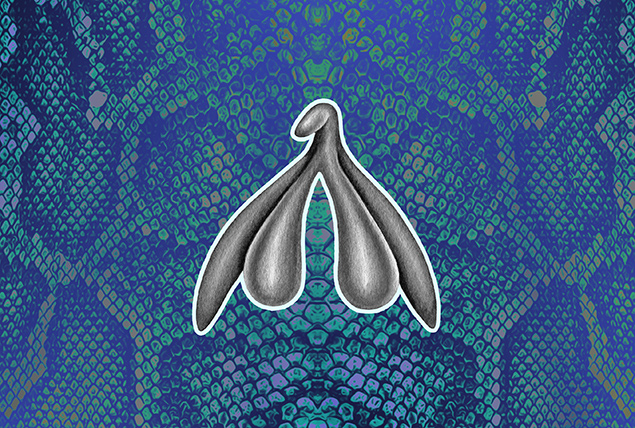Snakes Have Clitorises…sss, Study Finds

When Megan Folwell, now a doctoral candidate at the University of Adelaide in Australia, was a kid, she developed an unusual interest in female reproductive anatomy. While her friends flipped through picture books and magazines, the young future biologist poured over her mom's midwifery textbooks, enraptured by drawings of fetuses in utero and charts of dilated cervixes.
Folwell's fascination with reproductive biology would follow her through college and into her doctoral program, which is focused on vagina morphology with comparative hemipenes morphology in snakes.
Studying snake reproductive biology, Folwell uncovered decades of research on the snake hemipenes—the pair of spiky male reproductive organs found on male snakes and lizards—but found minimal research on the genitalia of female snakes. And there was nothing—"nothing at all!"—on the snake clitoris, Folwell said.
Acting on a hunch
Folwell dissected a female Australian death adder (predeceased, donated by a venom supply company), making an incision near the tail to clear away the muscle and connective tissue. And sure enough, beneath the venomous snake's cloaca (a multifunction, vagina-like cavity), tucked between a pair of scent glands, was a pair of small, pink clitorises or hemiclitores.
Stunned, Folwell gathered a team of researchers and set out to investigate. Examining the anatomy of eight other snake species, the team discovered hemiclitores in every one.
Among different species, researchers discovered distinct clitorises that varied in appearance.
"There was huge variation in shape, size and characteristics," Folwell said. "Some were huge and took up almost the entire space of the tail, like the cantil viper. Some, like the death adder, were a little, heart-shaped structure between two scent glands."
The researchers documented their findings in a paper published in December 2022 in the Proceedings of the Royal Society B, the first-ever scientific documentation of the hemiclitores in female snakes.
The scientists don't know the purpose of the snake's clitoris—yet, Folwell said. But the discovery could change our understanding of how snakes mate.
What does the finding mean?
"The clitoris could indicate many different behaviors that we've just not thought important, such as the pulsing of the tail of the male around the female, which could be clitoral stimulation," Folwell said. "It could be preparing her for sperm uptake or sperm storage, or vaginal relaxation and lubrication to aid in mating and accepting those hemipenes with the really big spines and hooks."
Until now, our understanding of female sex organs in many animals has been limited due to an "overwhelming focus on male genitalia," according to the study.
"Up until now, we theorized about a lot of the mating behaviors of snakes based on male biology," Folwell said. "There's an entire second side of the story. It's like we've been reading half the book and presuming the rest, and now we can start the second half."


















